Author: Philip Uwaoma
The Isuzu VehiCROSS, introduced in 1993 as a jaw-dropping concept, defied conventional norms in the automotive industry. Four years later and against all odds, this quirky 4X4 became a production reality. The VehiCROSS made a bold statement with cutting-edge technology and distinctive, polarizing styling, standing out in a market dominated by two-door 4X4s.
What set the VehiCROSS apart were its genuine credentials. It boasted innovative 4WD technology known as "Torque on Demand," utilizing traction control sensors to intelligently distribute power between the front and rear axles. The cabin featured Recaro seats and, at that time, a potent V6 engine. Isuzu went all-in with the unique styling, leaving opinions divided – some, like me, adore it, while others may find it unconventional.
However, the VehiCROSS came at a price, both figuratively and literally. Its premium pricing and Isuzu's unconventional manufacturing approach added the final touch to its uniqueness. Today, 24 years later, the Isuzu VehiCROSS is still a testament to innovation and individuality in the automotive world. It would’ve been the perfect SUV, both in North America and African markets like Nigeria, but for a few critical handicaps that can’t be helped. Let’s dive in.
Related Reading: Here’s Why Fiat Panda Cross Is The Perfect Small Car For Nigerian Bad Roads
You Remember Isuzu, Right? Right?
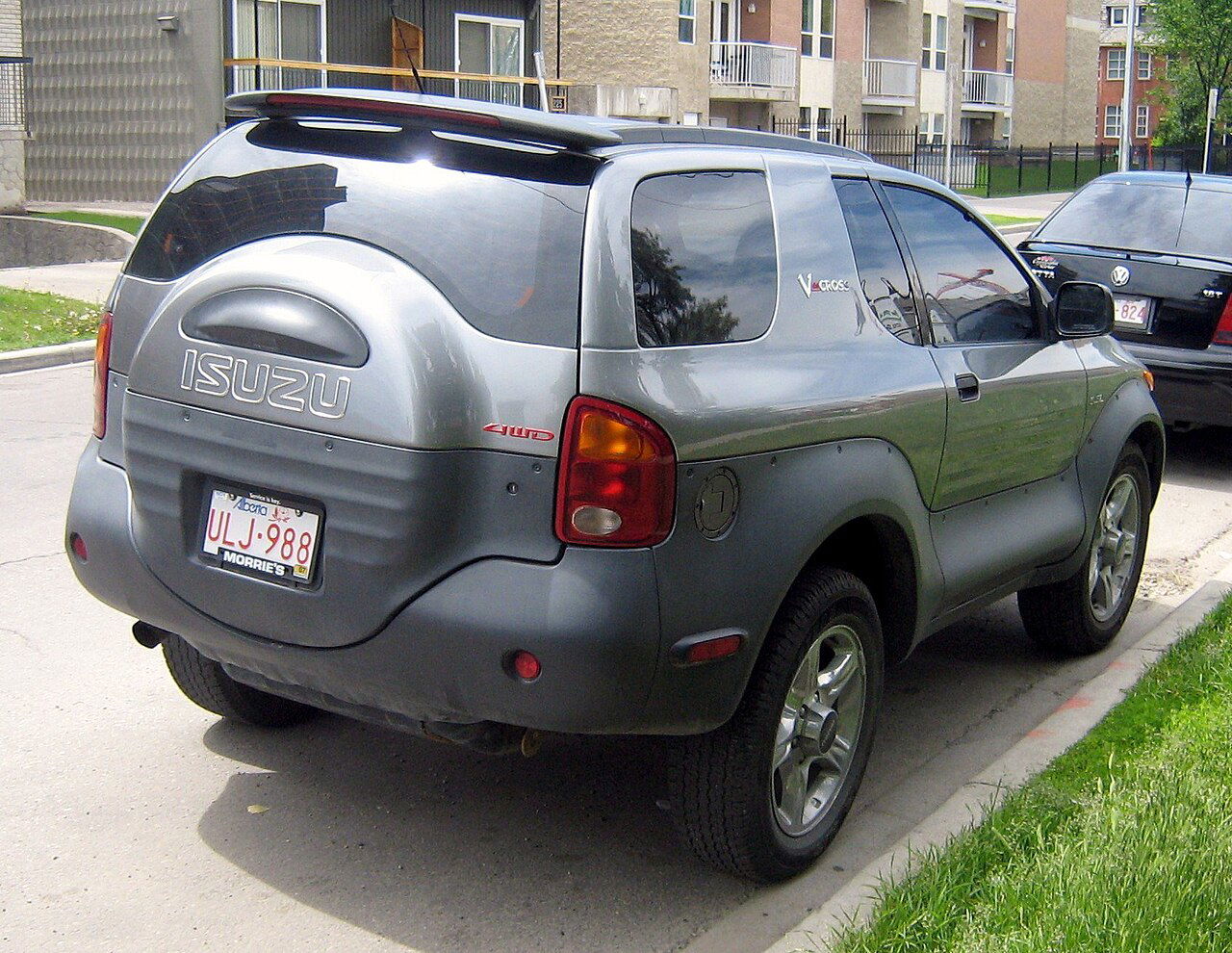
In America, most people’s recollection of Isuzu is the Isuzu NPR commercial trucks you may have seen deliver household appliances or furniture to your doorstep.
While their automotive presence has faded from the American market, car enthusiasts might recall models like the Ascender SUV, Isuzu i-Series pickup, or the Geo Storm.
In Nigeria, most people can only recognize the Isuzu Trooper SUV, Tiger pickup, and D-Max. However, Isuzu's history spans over a century, marked by shifts in focus. In the 1990s, Isuzu ventured into producing unique and innovative vehicles, leading us to the remarkable Isuzu VehiCROSS.
The Isuzu VehiCROSS (UGS250) compact SUV graced the market from 1997 to 2001 (1997–1999 in the Japanese market; 1999–2001 in the US). The 2-door crossover shared key components with the Trooper, including 3.2-liter and 3.5-liter V6 engines generating 215 horsepower at 5,400 rpm and 230 lb-ft of torque at 3,000 rpm.
Its distinctive exterior design featured short overhangs, an aggressive forward stance, titanium "teeth" in the grille, a black hood insert, and black plastic cladding on the vehicle’s lower half.
In the US, it came with 16" polished wheels in 1999 and 18" chrome wheels thereafter, while the Japanese version featured 16" alloys with chrome center caps. This should help you identify which market it came from in case you're shopping for one in the used car market.
The VehiCROSS initially debuted as a concept vehicle at the 1993 Tokyo International Auto Show, and its swift transition to production in Japan in 1997 was notable for its minimal design changes and cost-effectiveness. This achievement was possible thanks to the use of affordable ceramic body-stamping dies and the repurposing of existing Isuzu components.
The VehiCROSS was a showcase of Isuzu's off-road technology and featured monotube shocks with external heat-expansion chambers, a technology typically reserved for off-road motorcycle racing.
Motor Trend recognized the VehiCROSS by featuring it on the cover of its May 1999 issue and including it in the "Top 10 Sport Utilities" for Most Unique Styling. Four Wheeler acknowledged the VehiCROSS as the "First Runner Up" for Four Wheeler of the Year in 2000, trailing behind the Tahoe Z71.
It outperformed competitors like the Chevrolet Tahoe Z71, GMC Yukon, Nissan Xterra, Ford Excursion, and Mitsubishi Montero Sport in both trail and highway performance.
Isuzu also teased enthusiasts with concept versions of a four-door variant (VX-4) and a roadster (VX-O2) at the 2000 Los Angeles International Auto Show, though neither made it to production. These concepts were later donated to the Petersen Automotive Museum in Los Angeles but had to be returned to Isuzu due to legal reasons in 2017, ultimately meeting their demise.
Why You Hardly See The VehiCROSS
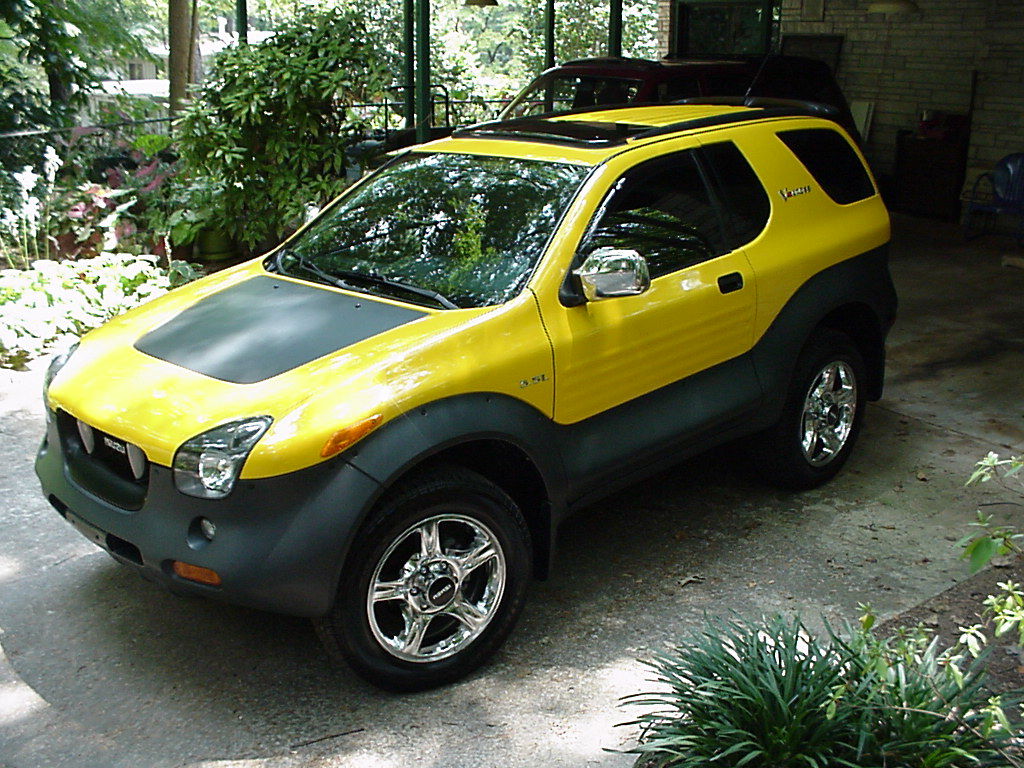
The Isuzu VehiCROSS saw a limited production run from 1997 to 2001, yielding just 5,958 units in all. Surprisingly, the scarcity of these vehicles wasn't due to a lack of demand.
The VehiCROSS started life as the sort of daring and futuristic off-road concept everyone knows is just for show and would never see the light of day. However, it’s just typical of Isuzu’s innovative spirit to find a way to turn this audacious concept into reality with minimal alterations.
To expedite VehiCROSS's unlikely journey from concept to production, Isuzu adopted cost-cutting measures that showcased their ingenuity. A dedicated team of 15-20 experts set out to achieve this feat in nearly half the time it would typically take.
Their secret weapon was a cost-effective approach: instead of using a cast iron die, which would have taken around four months and cost approximately $1.5 million to create, they opted for a ceramic die.
This choice slashed costs by at least half and reduced the die-making process to slightly over two months. Considering that a typical vehicle required 20 to 30 dies, this decision translated into significant savings.
However, the choice of ceramic tooling dies came with a drawback – they wore out more quickly compared to cast iron dies. Consequently, the VehiCROSS was destined to be a limited-production vehicle from the outset, ergo, why you hardly see them.
Isuzu set an annual production cap of 2,400 units, anticipating that the dies would become unusable after two years of production. Remarkably, Isuzu managed to extend production for three model years in the United States.
Sales were intentionally restricted, resulting in a total of just 5,958 units produced between 1997 and 2001, with 1,805 for the Japanese domestic market and the remaining 4,153 sold in the United States.
Since Japanese sales faced limitations due to non-compliance with Japanese Government dimension regulations and higher annual road tax obligations tied to engine displacement, we'll never know for sure how the market would've ultimately responded to the quirky but impressively capable VehiCROSS.
Isuzu's strategy of limited production harked back to a similar approach they employed in the mid-1960s to create exclusive 2-door cars like the dramatic 117 Coupe and the later Isuzu Piazza. The VehiCROSS carried a base price of $28,900 ($54,082 adjusted for inflation [₦40,404,662.20]), making it a distinctive and unique offering in the automotive landscape.
3 Reasons Why Isuzu VehiCROSS Is A Perfect Compact SUV For Good And Bad Roads

1. Curious Design
Uniqueness is VehiCROSS’ defining trait, the essence that fuels its identity. Encountering a VehiCROSS is a rare occurrence, and those fortunate enough to witness one often do a double-take, puzzled yet intrigued by its unfamiliar presence.
Just looking at it, you can already imagine becoming part of its peculiar charm by just slipping behind the wheel. If you crave attention and yearn to stand out in a crowd, the VehiCROSS is your ticket because all eyes will be on you. Guaranteed!
From the very beginning, the VehiCROSS makes an unforgettable impression with its quirky design. Even its name carries a hint of eccentricity, perfectly matching Isuzu's unconventional approach.
While it may not win any conventional beauty contests, the VehiCROSS possesses a design that captivates your gaze. It's the kind of vehicle with so many intricate details that you're likely to discover something new each time you cast your eyes upon it.
Related Reading: 2005 Ford Escape Hybrid: A Look Back At The World's First Hybrid SUV
One of the standout features that immediately grab your attention is the distinctive cladding. The VehiCROSS wears cladding so bold you might think its “off-road” classification includes marine capabilities.
It’s not just for show, though. Anyone who has ventured off-road down tight trails knows that trees and shrubs tend to leave their marks in the form of pinstripes and dings on your vehicle's bodywork. If your car is a VehiCROSS, the resilient plastic pontoon cladding takes the brunt of such encounters. Many Nigerian drivers will prefer their vehicles built this way.
Beyond the cladding, there are other captivating design elements to admire. The fanged grille exudes a fierce demeanor, while the ribbing on the doors adds an intriguing texture.
Notably, the VehiCROSS proudly flaunts a spare tire carrier on its rear, though in a twist of eccentricity, the spare tire is actually on the inside of the door. This idiosyncratic approach further contributes to VehiCROSS's endearing and one-of-a-kind design. It's a vehicle that commands attention, invites curiosity, and leaves a lasting impression wherever it goes.
2. Innovative AWD System
Beyond its eye-catching design, the Isuzu VehiCROSS reveals its true innovation. Nestled in the engine bay is a potent 3.5-liter 6VE1 V6 engine, churning out a respectable 215 horsepower and 230 lb-ft of torque.
This powerplant is mated to a four-speed automatic transmission, which is seamlessly managed by Isuzu's cutting-edge Torque-On-Demand (TOD) automatic 4×4 system. Collaborating with Borg-Warner, Isuzu crafted a system equipped with 12 input sensors and sophisticated software that aims to detect and preempt slippage.
In normal driving conditions, the TOD system directs power to the rear wheels. However, the magic lies in its ability to anticipate and counteract any potential loss of traction.
The Torque-On-Demand system remains vigilant by continuously monitoring factors such as throttle input, vehicle speed, and wheel speeds. Its goal is to thwart traction loss before it even begins, ensuring a secure and controlled driving experience.
What's truly remarkable is that Isuzu pioneered this system 26 years ago, a feat that still garners admiration today. In addition to this advanced technology, the VehiCROSS offers a low-range option for enhanced off-road capabilities.
The Japanese version provides a choice between 2WD without TOD or 4WD with TOD. However, the US-exclusive constant 4WD TOD system, fortified with 12 independent sensors attuned to wheel spin detection, can swiftly redirect power to the wheels with the most grip.
This configuration grants the VehiCROSS exceptional traction on slippery surfaces, be it rain-soaked roads in Japan, snow-covered terrains in America, or potholed streets in Nigeria.
3. Amazing Handling
Complementing the formidable four-wheel-drive system of the VehiCROSS is a sophisticated suspension setup featuring aluminum monotube shocks equipped with external heat-expansion chambers.
Isuzu proudly touted these shocks as nearly impervious to overheating, offering superior damping performance compared to conventional shocks.
Remarkably, the technology employed in these shocks has become commonplace in modern off-road vehicles, but at the time, Isuzu positioned them more towards the realm of racing. Go figure.
Isuzu's decision to use these advanced suspension components was no coincidence. The VehiCROSS was conceived to meet the demanding requirements of rally homologation specifications.
Isuzu's commitment to the sport was further evidenced by their participation in prestigious events like the 1998 Dakar Rally and the 1999 Australian Safari Rally, where VehiCROSS vehicles took to the challenging terrains with gusto.
The Isuzu VehiCROSS owners, no matter what they thought of the SUV, testified that it possesses exceptional on-road handling capabilities, a unique talent that defied typical 4x4 expectations. One owner remarked that he was genuinely astounded by the VehiCross’ level of agility that would typically lead to full-on rollovers in other vehicles with similar ground clearance and a high center of gravity.
Related Reading: 2023 Lexus GX: Review, Price, Photos, And Video
Several factors contribute to this surprising agility. The VehiCROSS boasts a short wheelbase, minimal overhangs, and proximity between you and the front of the hood.
This configuration translates to excellent visibility, which in turn bolsters your confidence on the road. You point the VehiCROSS in the desired direction, apply the throttle, and effortlessly guide it through turns. It responds promptly, especially considering its substantial stature.
While the VehiCROSS exhibits on-road agility, its body-on-frame truck construction, robust suspension, and purpose-built 4WD gearing combine to deliver impressive off-road prowess.
It's a vehicle that not only catches your eye but also offers a level of performance and capability that defied expectations when it was introduced and still stands as a testament to Isuzu's pioneering spirit in the automotive world.
3 Deal-Breaking Flaws Of The Isuzu VehiCROSS Despite Its Impressive Features
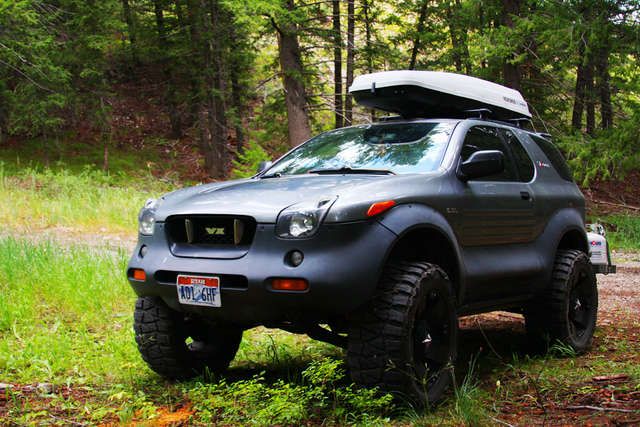
1. Scarce Parts
The VehiCROSS's distinctiveness extends to the challenge of sourcing replacement parts. Given that most of these components are no longer in production, and those that have survived in good condition are scarce, the quest for parts can be a daunting and costly endeavor.
Notably, the VehiCROSS has strong familial ties with the Isuzu Trooper. This fact doesn’t exactly inspire confidence in terms of easy maintenance, but it did bless the VehiCROSS with a solid foundation.
Sharing the platform and four-wheel-drive system with the family-friendly Trooper meant that the VehiCROSS inherited genuine off-road prowess.
Under the hood, the widely-used 3.5-liter V6 engine and GM-sourced 4L30-E transmission brought a measure of reliability (with some exceptions like the TOD sensors and window regulators).
Additionally, this shared lineage made basic maintenance relatively straightforward and accessible. The problem, though, is that while the Trooper enjoyed wide availability and a substantial sales volume, borrowing components from various manufacturers (including the aforementioned GM transmission), the same cannot be said for the VehiCROSS.
As time passes, parts for the VehiCROSS have become increasingly scarce. It’s harder to find VehiCROSS parts compared to parts for competitors of the same era from well-established brands like Jeep, Toyota, and even Mitsubishi.
When it comes to VehiCROSS-specific parts such as panels, lights, and the distinctive hood insert, you might as well be on a scavenger hunt. In a market like Nigeria, this is a big blow to an otherwise perfect small SUV to take on the country’s diverse driving conditions.
2. Terrible Ride Quality
The handling is mind-blowing. The ride quality? Not so much, as some owners said road bumps were regrettably unduly noticeable. Here’s why: the VehiCROSS's suspension is configured such that the petite Isuzu might as well sit on road bumps.
This setup allows for the suspension's substantial downward travel, which, though a boon for off-road adventures, comes at the cost of limited upward travel.
This explains why some owners claimed minor imperfections on the road have the power to jolt you nearly out of your seat, with only the seatbelt serving as your tether to prevent an unwelcome rendezvous with the roof. I know it sounds exaggerated, but you get the idea.

Adding to the equation, the Recaro seats, admittedly remarkably supportive, tend to be exceedingly firm. So, as you can imagine, the combination of rigid dampers, restricted upward travel, and unyielding seats creates a sensation akin to bouncing on an overly taut trampoline.
Impractical
The VehiCROSS's allure is undoubtedly rooted in its resemblance to a Mars Rover or whatever your childhood fantasy of an interplanetary 4x4 might have been. When compared to its competitors, VehiCROSS was truly from another world, but its audacious style brought with it some unique challenges.
Take, for instance, the seemingly simple task of changing the headlight bulbs. The lighting assemblies were so extravagantly designed, and the engine compartment was so densely packed, that replacing the driver-side light required a fair amount of disassembly.
And if you had dreams of fitting a larger spare tire, well, you'd find yourself with limited options – either stow it in the trunk or mount it on the roof.
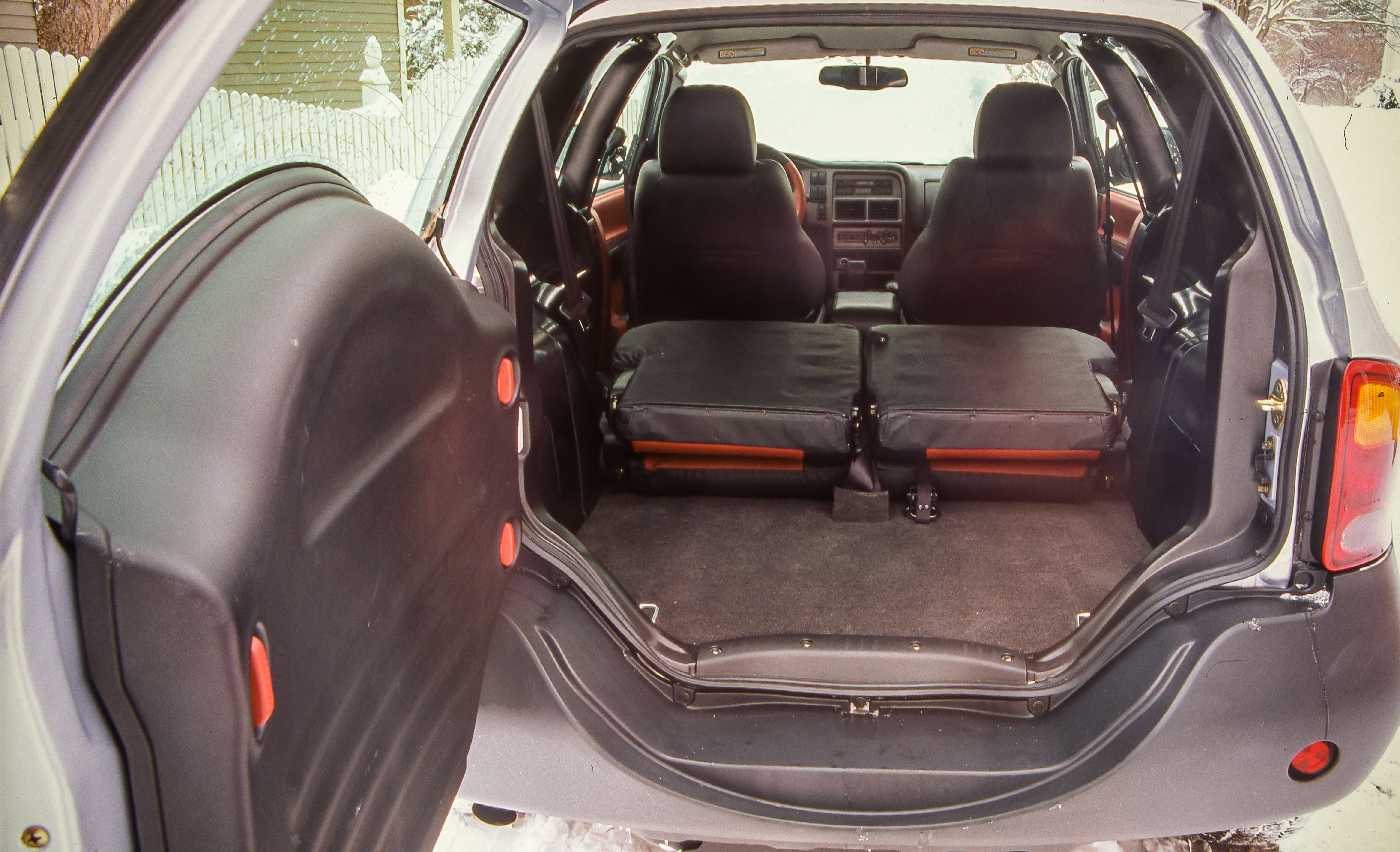
The built-in spare, which encroaches upon the rear window, not only limits rearward visibility but also creates a substantial blind spot, reminiscent of the blind spots found in the Toyota FJ Cruiser at the rear three-quarters. It reminds us that even the most captivating designs often come with their own set of quirks and trade-offs.
How Much Is The Isuzu VehiCROSS?
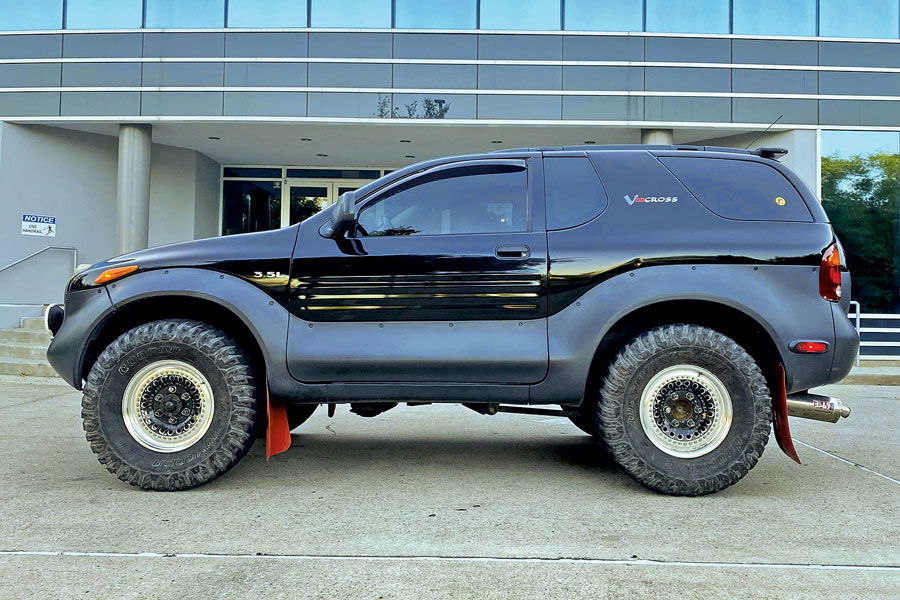
Isuzu VehiCROSS can cost anywhere from $6,000 (around ₦4.5 million) to $18,000 (around ₦13.450 million) in the used car market.
You want to buy the VehiCROSS despite the flaws you’ve just read about? I get it. The VehiCROSS was a futuristic SUV with enough onions to stare down modern crossovers introduced this year.
Also, there are increasingly fewer of them out there available for sale, and their value might finally appreciate to "classic car" levels. So, buy and hold? You never know.
If you want to buy this car, I recommend looking towards Japan for models with fewer owners and in overall better health condition. There also seems to be more of them up for sale in Japan, which is surprising considering the North American market got the bulk of the nearly 6,000 units produced.